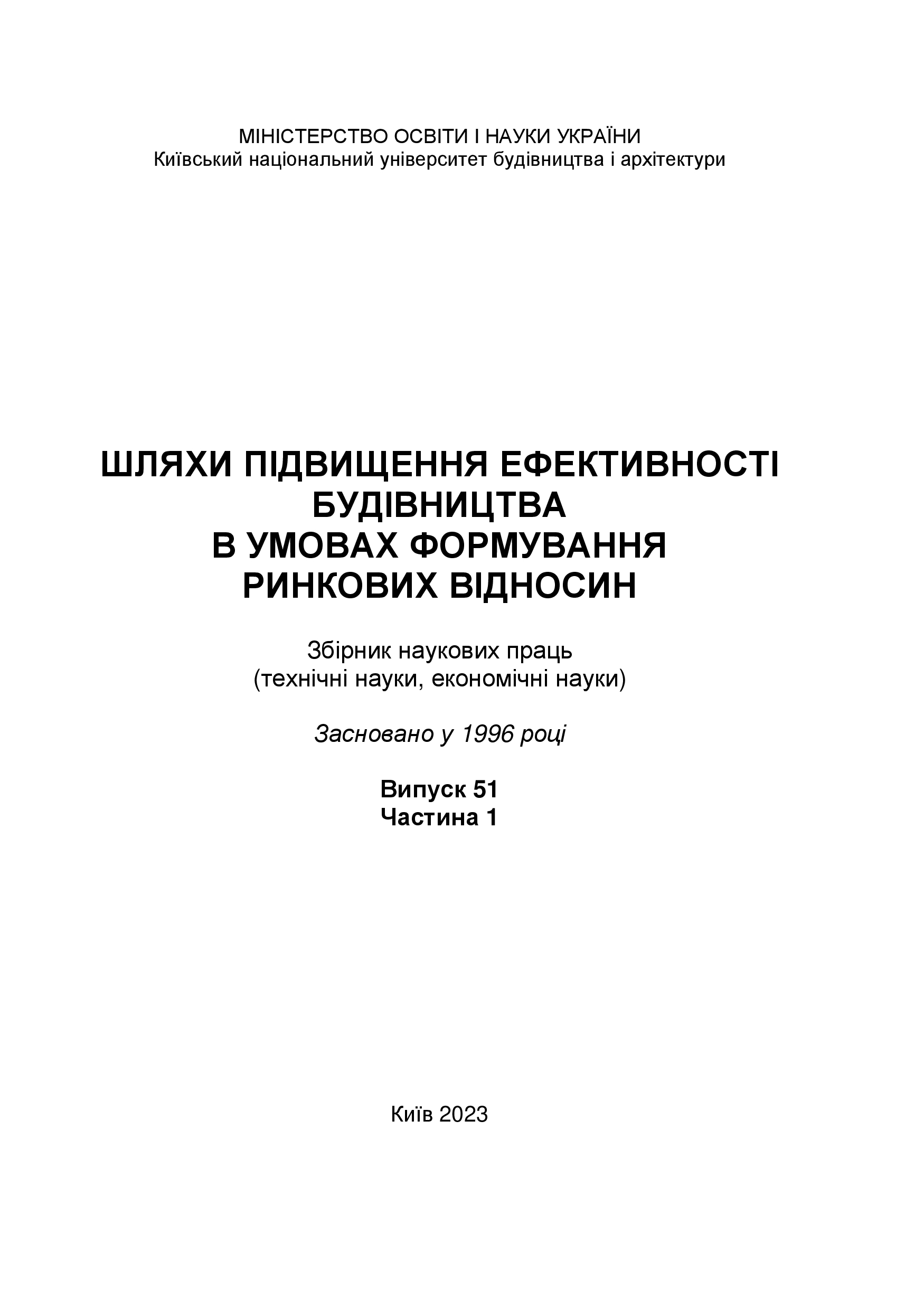Improvement of organizational and technological tools for assessing the effectiveness of construction and investment projects
DOI:
https://doi.org/10.32347/2707-501x.2023.51(1).234-240Keywords:
planning, organization of construction, organizational and technological models, efficiency of construction evaluation, construction and investment projects, tools and methods of evaluation of construction projectsAbstract
The main principles and approaches to construction planning and production organization are taking into account the dependencies between the terms of project implementation and its cost. The basis of this methodology for determining the effectiveness of the implementation of construction projects is the methods and methods by which the participants of the construction and investment process determine the duration and cost of construction during tenders at various stages of organizational and technological development.
The effectiveness of improving these methods essentially depends on how fully they take into account the specific features of the management-control, organizational-technological, and financial situations in which the construction will be carried out.
A very wide and diverse list of factors can affect the structure and indicators of construction projects. Among them, for example, the relative remoteness of the main suppliers of resources from construction sites, the underdevelopment of the construction industry in some regions of the country, the influence of climatic factors on the productivity of labor, other powerful influence of elements of the external environment and the impact on project results in existing models and methods. As a result, we have a real duration of construction higher than the proposed one.
This is especially relevant in conditions where improving the efficiency of capital investments in construction projects requires finding organizational and management tools to increase the level of economic relations in construction, strengthen contractual discipline, and increase the economic responsibility of builders and customers for the final results of construction projects.
Implementation of construction projects is associated with high costs. In order to effectively use existing methods of construction planning and production organization in the established economic conditions, to have a positive impact on the acceleration and efficiency of construction, it is necessary to add methods that take into account the existing specific features of the construction industry. The need to create a certain toolkit for solving tasks related to increasing the efficiency of construction projects, minimizing the duration of projects and maximizing profit, taking into account organizational, technological, economic factors and elements of the external environment, determines the relevance of this scientific research.
References
Антипенко Е.Ю. Теоретико-методологический инструментарий оценки эффективности организационно-технологических решений проектов строительной отрасли. Вісник ДНУЗТ імені академіка В. Лазаряна. Д.: Вид-во ДНУЗТ, 2010. Вип. 33. C.15-19.
Вода І.С. Підвищення ефективності управління інвестиційною та інноваційною діяльністю будівельних організацій (на прикладі будівельних організацій Донецької області): автореф. дис... канд. екон. наук: 08.07.03. К.: КНУБА, 2006. 20 с.
Божанова В.Ю. Совершенствование оценки эффективности управления инвестиционным проектом: дисс... кандидата технічних наук: 05.13.22. Днепропетровск: ПГАСА, 2002. 189 с.
Міхельс В.О. Об’єднана стратегія економічного управління підприємницьким проектом: Монографія / В.О. Міхельс, В.П. Бондар (Під заг. ред.проф. В.О. Міхельса). К.: КНУБА, 2003. 200 с.
Михельс В.А., Вахович И.В. Интенсивность капитальных инвестиций в предпринимательский проект-критерий их эффективности. Строительное производство. 2001, № 42. С. 68-72.
Пайле А. Практика контроллинга: Пер. с нем. М.: Финансы и статистика, 2001. 336 с.
Удосконалення методів оцінки ефективності діяльності підприємств / С.Я. Салига [и др.]; Гуманітарний ун-т "Запорізький ін-т держ. та муніципального управління". Запоріжжя: ГУ "ЗІДМУ", 2007. 55 с.
Поколенко В.О. Критеріальні та організаційні основи формування циклу будівельних інвестицій на інноваційних засадах: автореф. дис... д-ра техн. наук: 05.23.08. К.:КНУБА, 2004. 39c.
Тян Р.Б., Ватченко О.Б., Ісхаков С.Ш., Оскома О.В. Проектний аналіз: навч. посіб. Д.: ДДФА, 2009. 244 с.
Тугай О.А. Визначення інвестиційної та інноваційної привабливості будівельного проекту з використанням процедури нечіткого аналізу параметрів. Прикладна геометрія та інженерна графіка. 2007, Вип.78. С. 330-333.
Тян Р.Б., Клочко Б.Г. Проблемы планирования реализации объектов строительства. Вісн. Придніпр. держ. акад. буд-ва та архіт. 2004, № 7/8. С. 96-100.
Downloads
Published
How to Cite
Issue
Section
License

This work is licensed under a Creative Commons Attribution 4.0 International License.
Authors who publish with this journal agree to the following terms:
- Authors retain copyright and grant the journal right of first publication with the work simultaneously licensed under a Creative Commons Attribution License that allows others to share the work with an acknowledgement of the work's authorship and initial publication in this journal.
- Authors are able to enter into separate, additional contractual arrangements for the non-exclusive distribution of the journal's published version of the work (e.g., post it to an institutional repository or publish it in a book), with an acknowledgement of its initial publication in this journal.
- Authors are permitted and encouraged to post their work online (e.g., in institutional repositories or on their website) prior to and during the submission process, as it can lead to productive exchanges, as well as earlier and greater citation of published work (See The Effect of Open Access).

